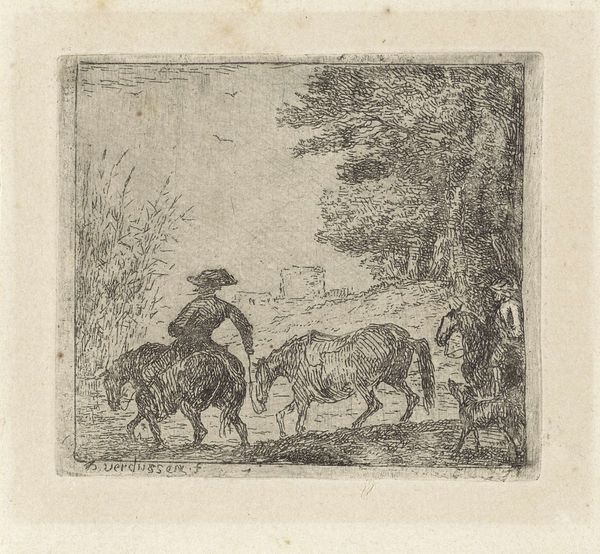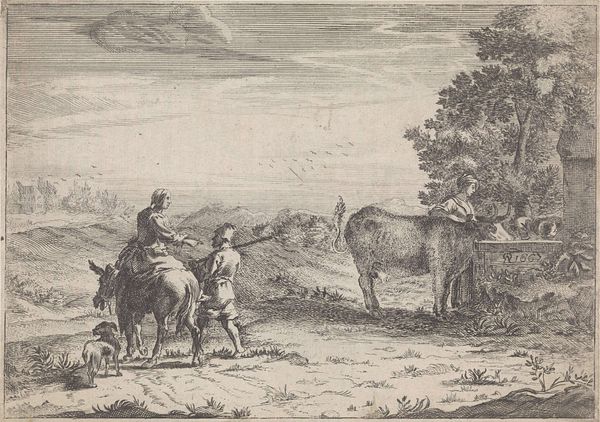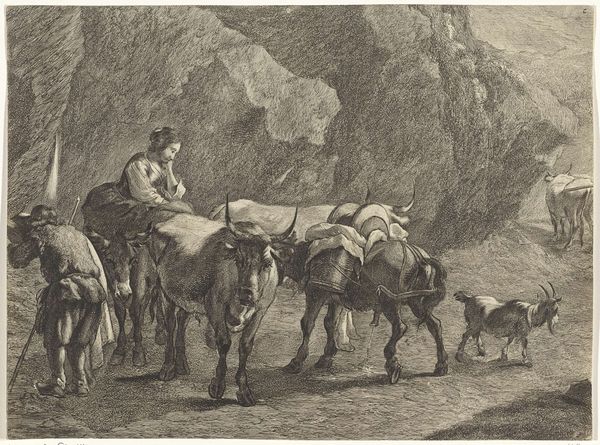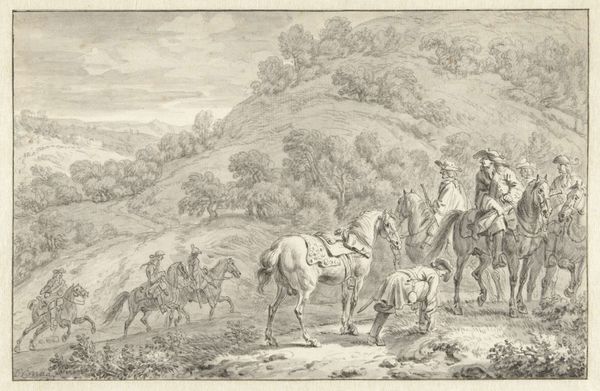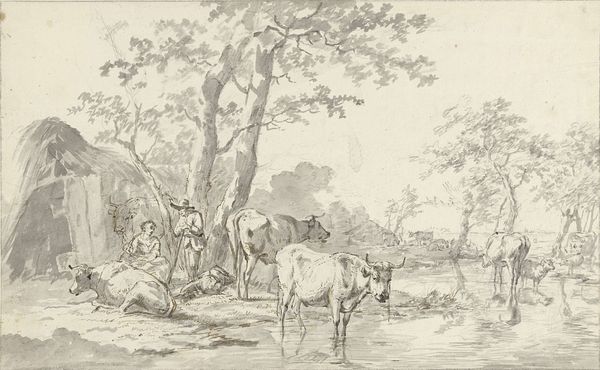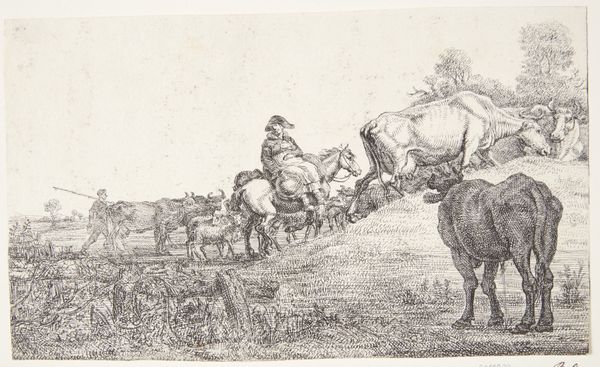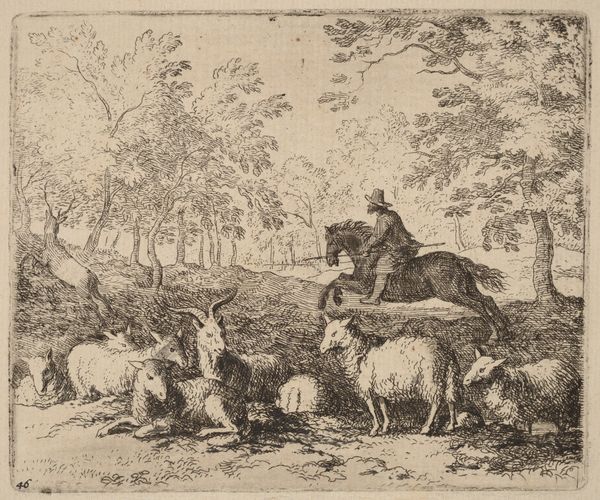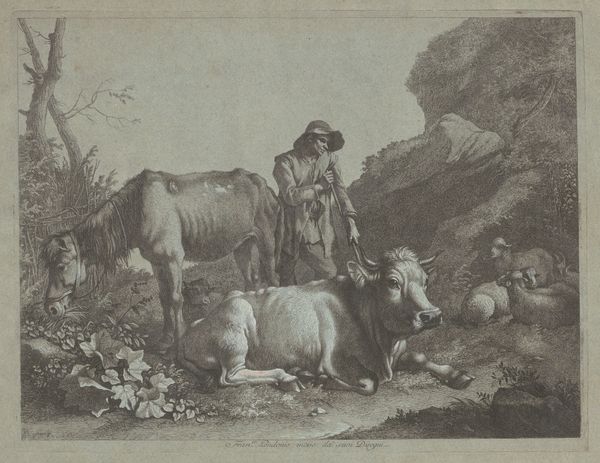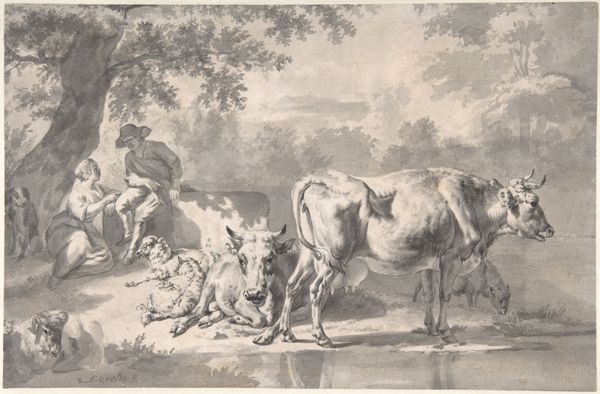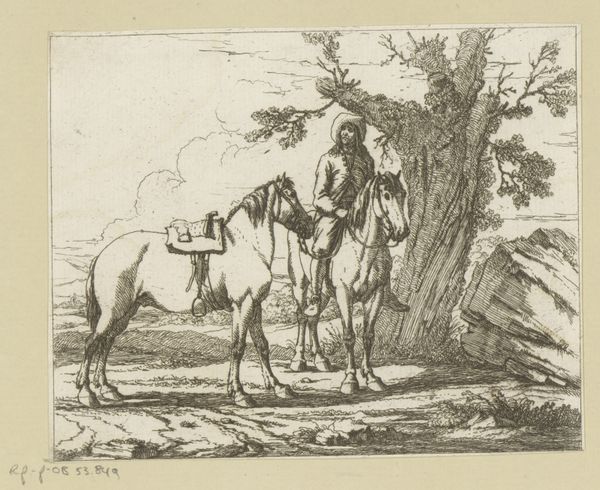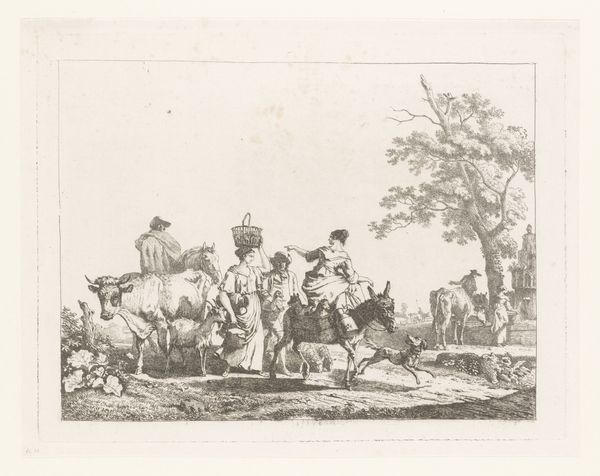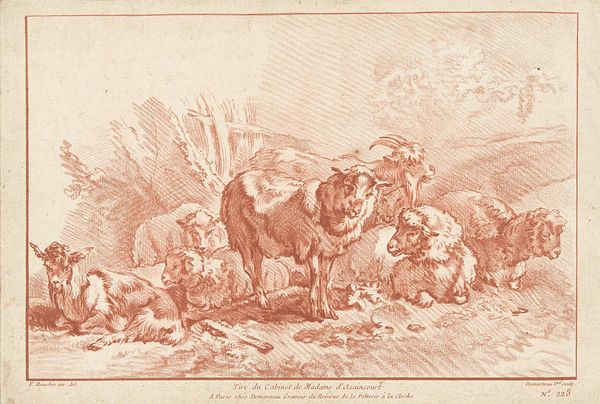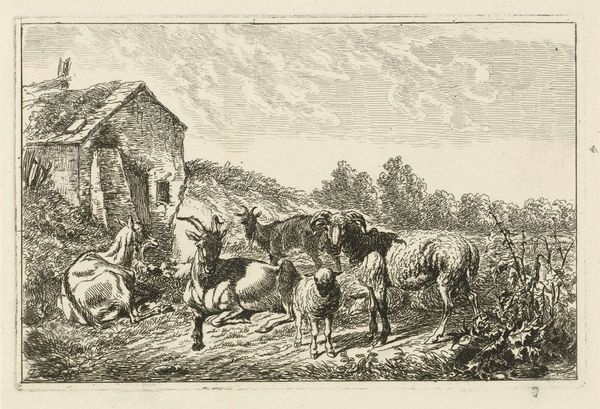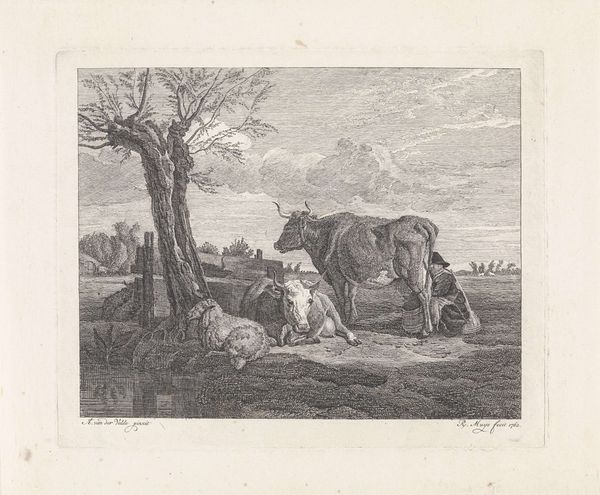
etching
#
dutch-golden-age
#
etching
#
dog
#
landscape
#
figuration
#
genre-painting
Copyright: Rijks Museum: Open Domain
Editor: This etching from 1664 by Jan Frans Soolmaker, titled "Man with Donkeys," is intriguing. The figures of the man and animals seem both burdened and stoic, set against the landscape. What catches your eye, looking at it? Curator: The recurring motif of the journey immediately strikes me. Think about it - the traveler, the path, the weight carried, both literally and metaphorically. Donkeys were potent symbols, associated with humility, patience, even stubbornness. Do you see the dog? Editor: Yes, next to the donkeys, tail wagging almost tentatively. What does the dog add? Curator: Ah, the dog! A symbol of loyalty, vigilance. In the context of a journey, it may represent faithfulness. But let's not forget the cloak covering the man: is that concealing identity, or is it protecting the human from the outside world? The man's head is also covered; is this a pilgrimage? Editor: A pilgrimage. I see that now in the circular form too - the artwork itself as an encapsulating journey. Curator: Indeed. And consider, this isn't simply an observation of rural life. Soolmaker deliberately arranges these symbolic elements, prompting us to ponder the nature of labor, fidelity, and the human journey. Look how small the figures are, against the land. It makes you wonder what kind of narrative it offers to its contemporary viewers. Editor: I hadn't thought about the land as an influence too! All of this makes me see the image differently. There's a whole visual language here that I had previously missed. Curator: Exactly! It's in these careful arrangements and symbols that an image gains lasting resonance.
Comments
No comments
Be the first to comment and join the conversation on the ultimate creative platform.
